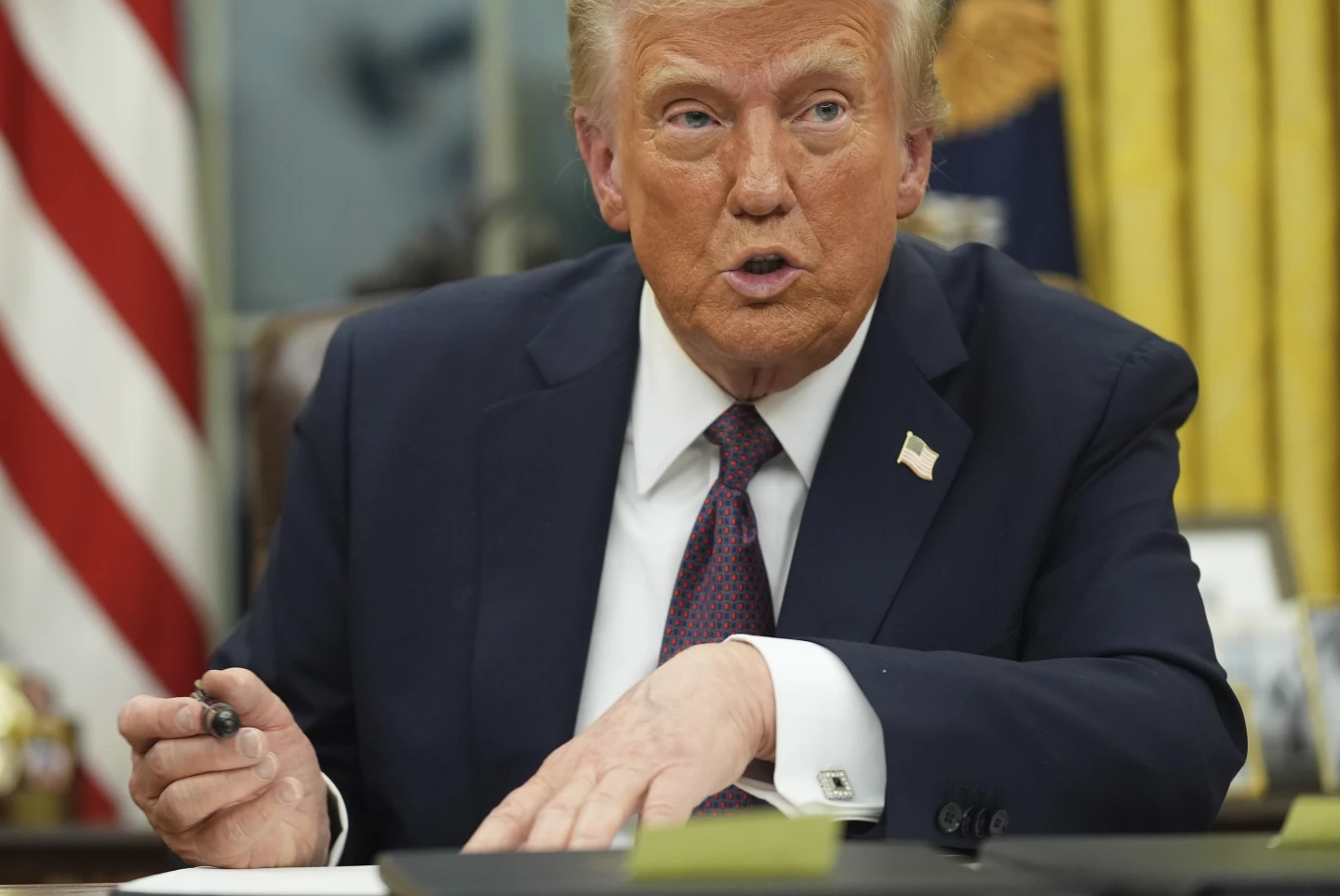During Donald Trump’s first term, his immigration policies, including the border wall and travel bans, were widely criticized. However, in his second term, public opinion has shifted in his favor. Voter backlash against President Joe Biden’s immigration policies allowed Trump to reframe the issue as a success, making it his strongest area of approval in the 2024 election.
Now back in the White House, Trump aims to repeat this strategy in the realm of trade, betting that his aggressive tariff policies will eventually win public support.
A major focus of Trump’s second term has been his imposition of tariffs on U.S. trading partners, including close allies such as Canada, Mexico, and China. He has declared April 2 as “Liberation Day,” signaling a shift to reciprocal tariffs, reversing decades of trade policy. While he argues that the U.S. has been exploited in trade deals, his approach has sparked concerns among economists and business leaders about potential disruptions to global markets.
Trump’s Tariff Strategy Faces Economic Risks Political Opposition and Potential Long-Term Gains
Trump’s push for tariffs mirrors his hard-line immigration policies, positioning him against a coalition of business interests, free-trade advocates, and international allies. By imposing tariffs on potentially trillions of dollars’ worth of goods, Trump seeks to realign global trade in America’s favor. However, this move comes with risks, including rising costs for consumers, supply chain disruptions, and diplomatic tensions with U.S. allies. Supporters argue that, if successful, these policies could revive American manufacturing and strengthen the economy in the long run.

Economic analysts warn of potential negative effects, including higher consumer costs and stock market volatility. Critics point to rising steel prices as an early warning sign that tariffs could put American manufacturers at a competitive disadvantage. Trump’s former adviser Steve Bannon acknowledges the political risks, particularly with upcoming elections in Wisconsin and Florida. If Republicans suffer losses, it could force Trump to adjust his tariff strategy.
Public Skepticism and the Political Gamble of Trump’s Trade Policies
Despite Trump’s confidence, recent polls indicate that his trade policies remain unpopular. A CNN poll showed that tariffs were the least popular issue among voters, with 61% disapproving of his handling of trade. In contrast, immigration—once his weakest issue—has become his strongest, with 56% of voters approving of his current immigration policies. This suggests that while his stance on border security has gained traction, his economic policies face greater skepticism.
Trump’s economic advisers argue that the global trading system has long disadvantaged American workers and that tariffs are necessary to restore balance. Stephen Miran, chairman of Trump’s Council of Economic Advisers, has outlined a strategy for restructuring trade, emphasizing that other countries depend more on the U.S. than vice versa. While critics warn of rising costs, Miran insists that American consumers have alternatives, whereas foreign exporters have fewer options.
Trump has hinted at possible flexibility in implementing tariffs, suggesting that some countries may receive exemptions. Meanwhile, reports from the U.S. International Trade Commission indicate that past trade policies provided only modest economic gains, reinforcing Trump’s argument that change is overdue.
His allies in Congress, such as Sen. Jim Banks, argue that the tariffs prioritize American workers over foreign interests. Whether this gamble will ultimately benefit the U.S. economy remains to be seen, but it is clear that Trump is committed to reshaping the global trade system on his terms.


